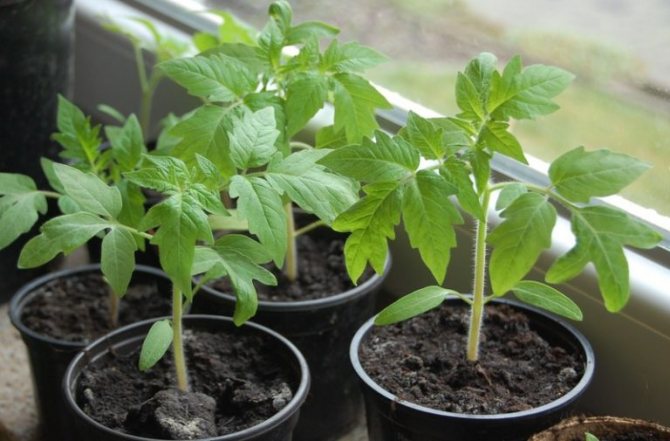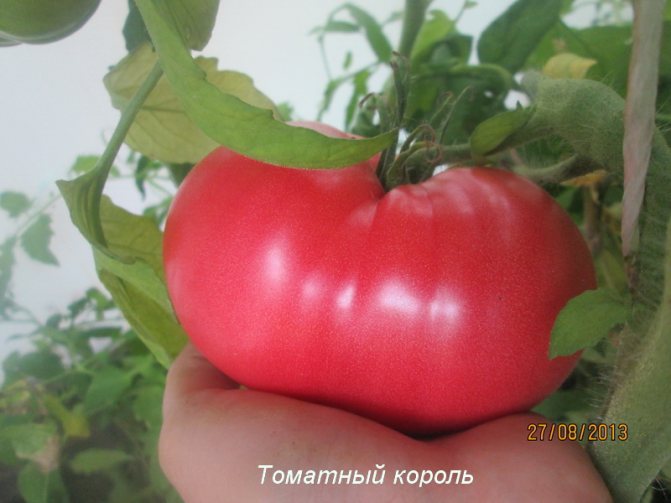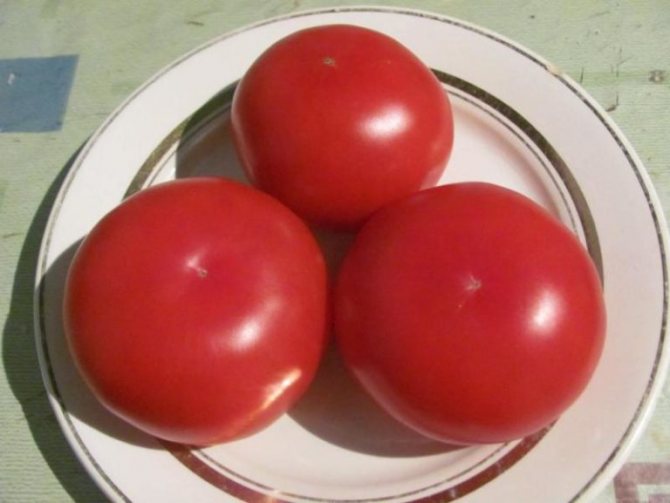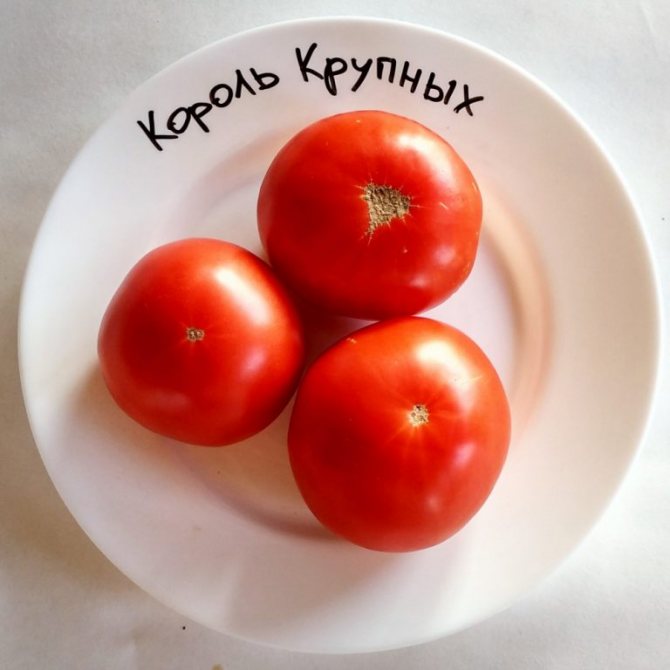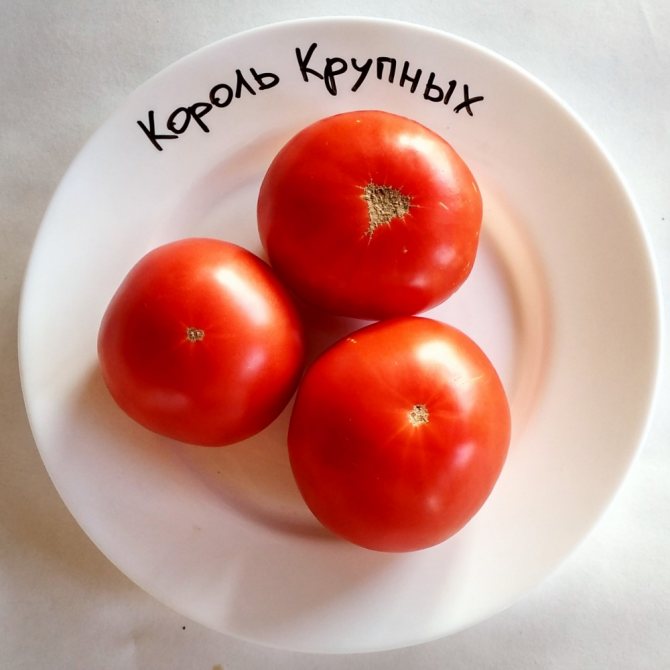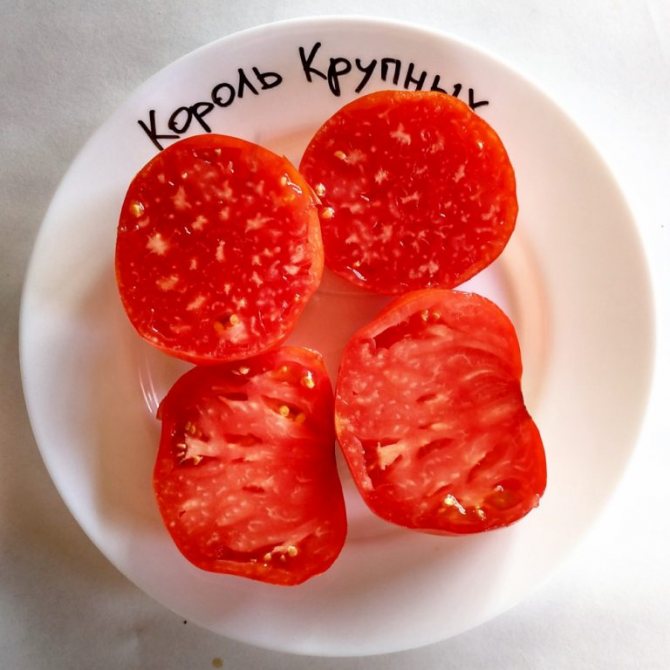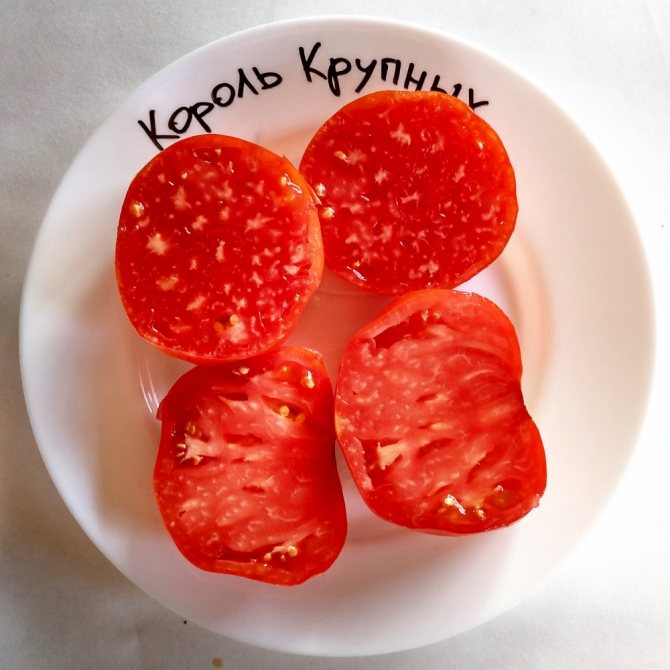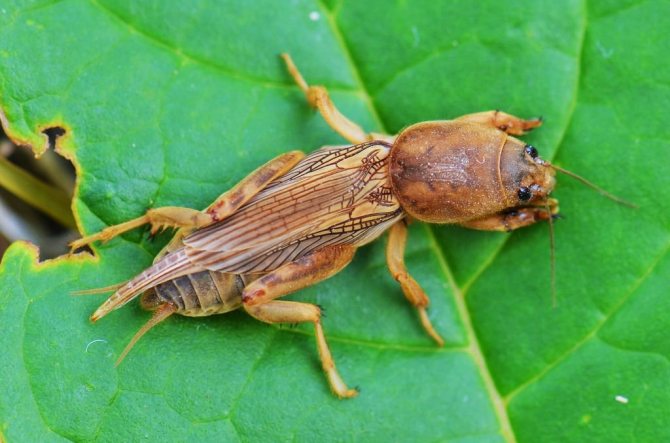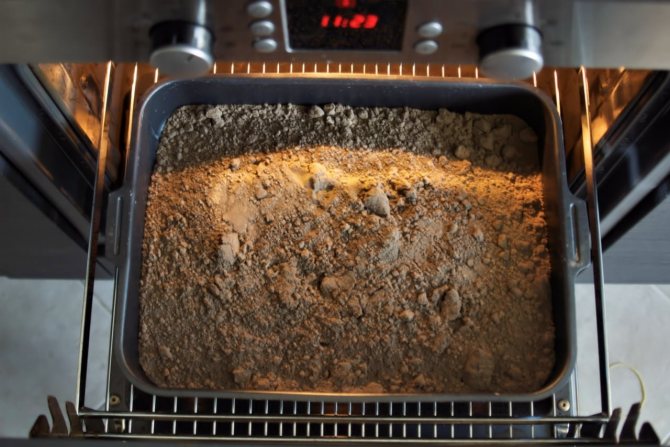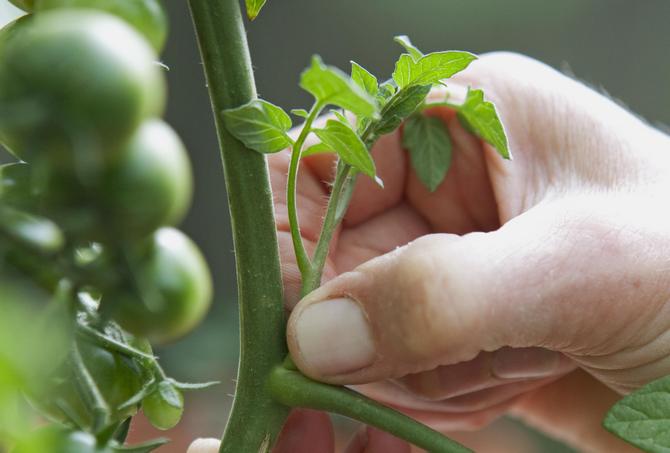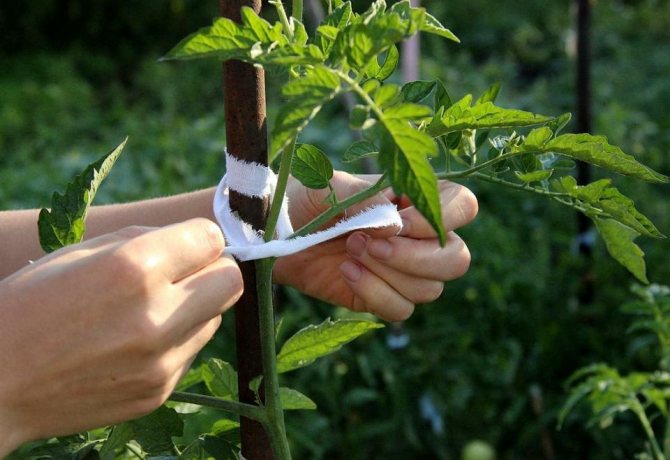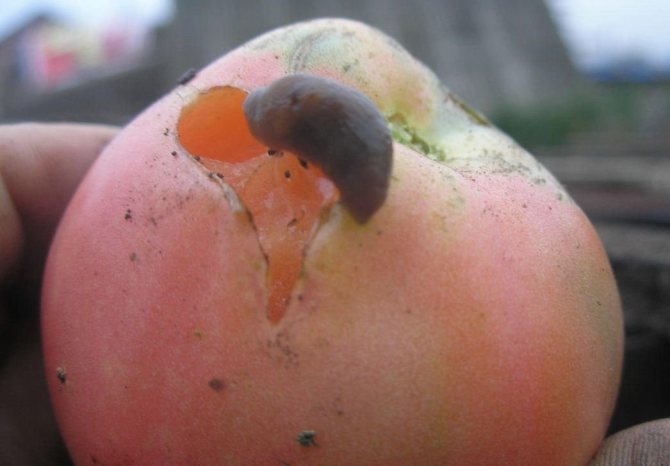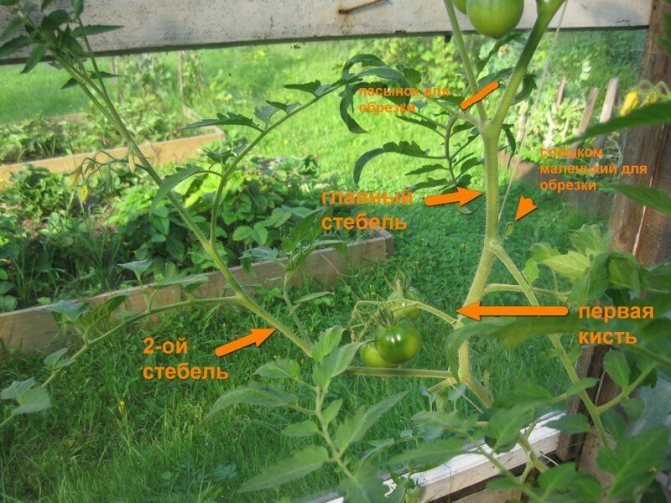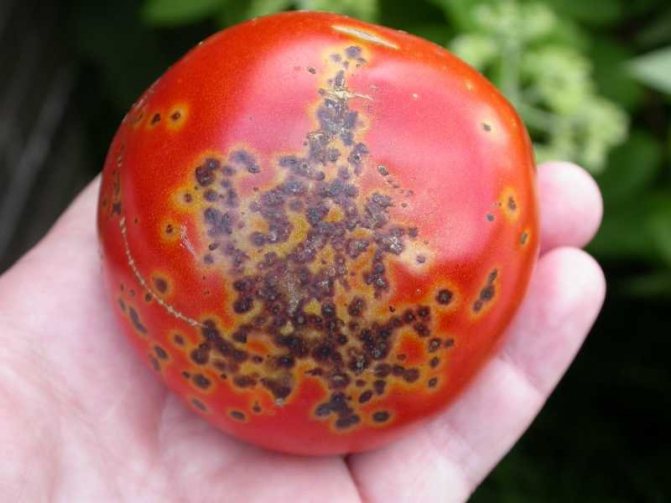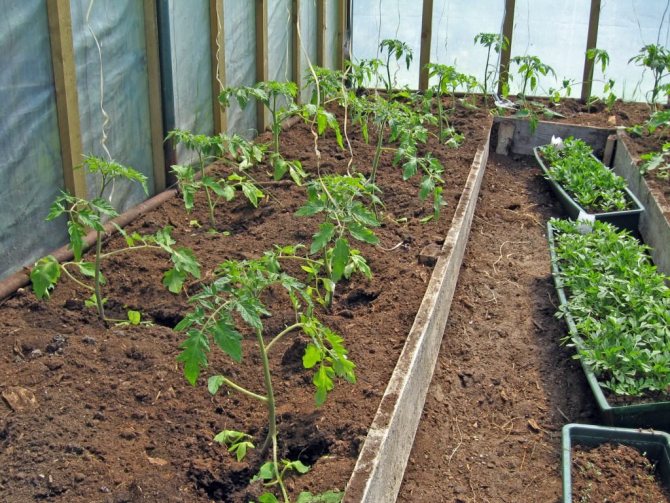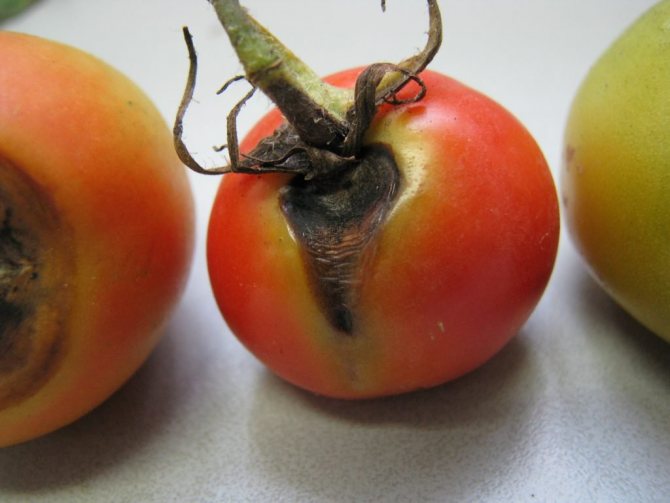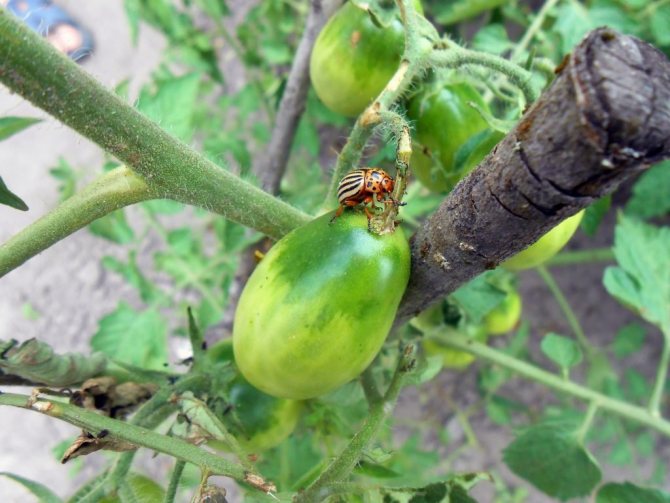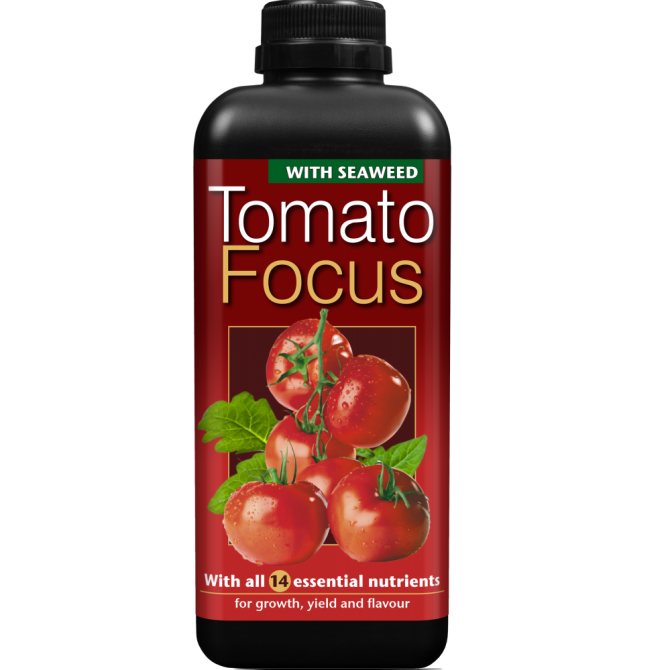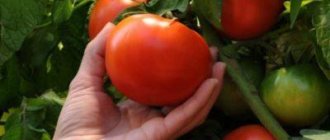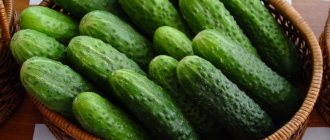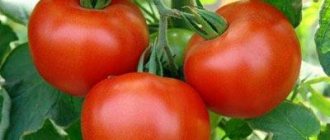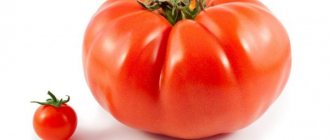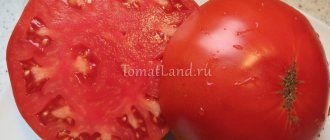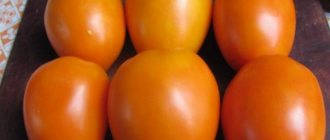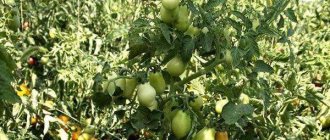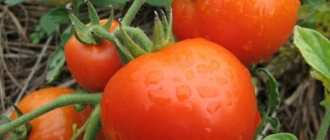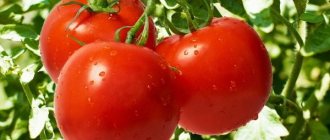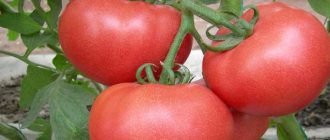Among the mega-large varieties in the list, the King of large varieties is in the lead. It brings abundant harvests when cultivated under cover (glass, film). Tomatoes differ in marketability, useful composition, beautiful appearance - raspberry glossy skin and fleshy pulp.
| Height | Pick-up location | Ripening terms | Fruit color | Fruit size | Origin | Fruit shape |
| Tall | Greenhouse, Open ground | Mid-season | Pink | Large | Variety | Flat-round |
general information
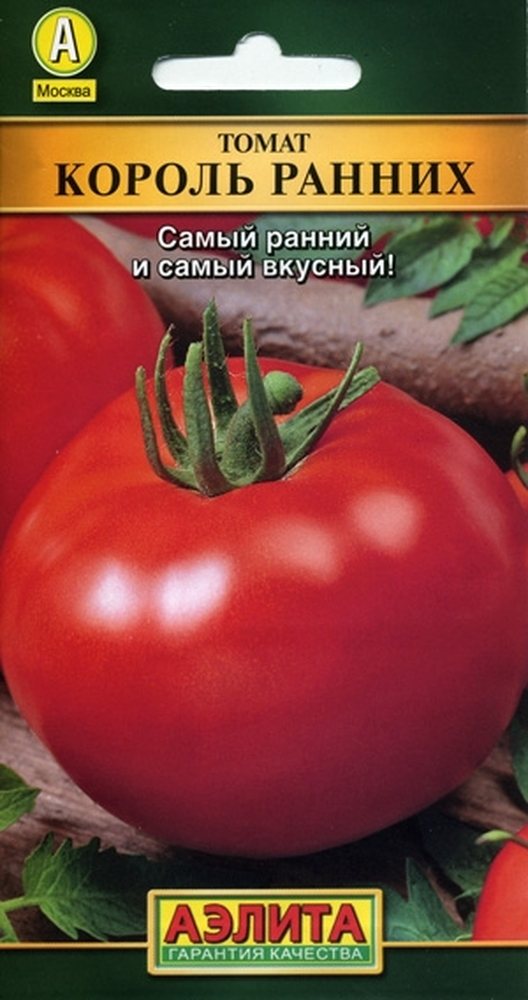
The variety "King of the Early" does not appear in the register of breeding achievements of the Russian Federation, Ukraine and Belarus.
Packs up this "king" with the indication "Our selection". At the same time, who is the author and originator of the variety is not indicated, but there is a note that the selection is Agro.
It is no secret that it is not easy to enter a variety into the register of breeding achievements, and it takes time. Perhaps in the future the variety will be tested and the commission will allow it to enter the register, but so far this has not happened.
Agro serves the variety as early maturing with the ability to grow indoors and outdoors.
There is another packer on the market. "King of the early" tomato from "Siberian Garden, reviews testify, and the manufacturer himself says that the tomatoes are early and raspberry colored, and its yield is up to 4 kg per bush.
Why is the Early King so good?
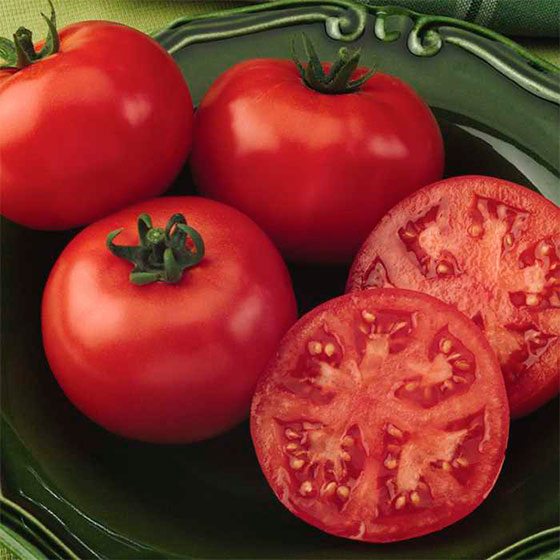

The most important advantage of this wonderful tomato is its early ripening period. But along with this characteristic, gardeners appreciate the King for the following qualities:
- High productivity.
- The possibility of obtaining large fruits in the early stages.
- Excellent taste of tomatoes.
- Beautiful appearance of the fruit.
- Versatility of use (not every tomato from this category is suitable for conservation).
- Good keeping quality.
In the conditions of the regions of risky agriculture, the King of the Early proved to be excellent when growing under shelters, in greenhouses.
The gardeners of Astrakhan, Krasnodar Territory are happy to grow this variety in the open field.
Characteristics and description
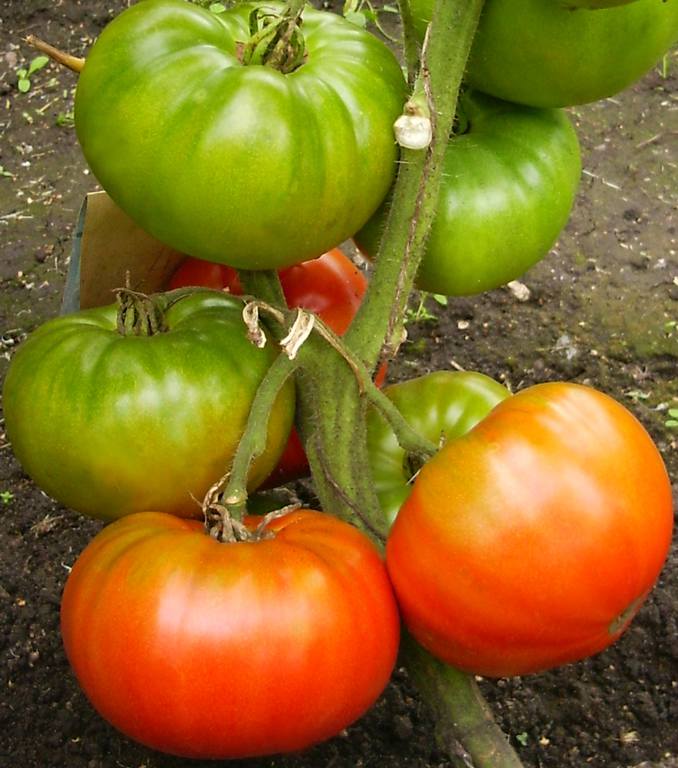

The vegetative form of the tomato is compact, undersized, determinate. The manufacturer indicates that each tomato cluster bears 3-5 fruits.
Considering the tomato "King of the Early" reviews, photos of who planted vegetable growers, sharing their impressions, indicate that the tomato sets fruits very early and their rapid ripening begins with simultaneous growth.
The fruits are large, weighty, reaching 200 g and having a flat-rounded and rounded shape. At the same time, the same bush can bear both ideally round, smooth fruits, and flattened and slightly ribbed ones.
The color of a fully ripe tomato is intensely red.
The producer describes the palatability as “good”, and vegetable growers agree with this assessment. The fruits are fleshy, without voids, with little seed.
The yield of the agro variety does not indicate, but vegetable growers say that each bush sets 5-6 fruits. At the same time, there is only one large, 180-200 each, the rest of the fruits are smaller. On average, you can take about 600-700 g from a bush.
Since the variety grows compact, 5 plants can be planted per square meter. Consequently, the yield will be in the range of 3.5-4 kg.
Of course, the yield is not great at all. Perhaps this is precisely the reason for not entering the variety into the register.
Description of tomato King of Giants
- Ripe tomatoes are yellow and heart-shaped.
- They are quite large in size, 400-600 grams, but there are also real giants of 800 grams.
- The number of chambers is 6-7.
- The dry matter contains 5-6%.
These tomatoes are very good fresh. They also make a delicious juice rich in vitamins. They are not used for conservation, as they are too large. Also, representatives of this tomato variety are very good in barrel salting.
Tomato King early from bred a little over a decade ago in Russia. It is recommended to plant it in a greenhouse in the middle lane and cold regions, and in open ground - only in the southern regions: Krasnodar Territory, Astrakhan Region. Also, in the middle lane, the greenhouse can be replaced by a film shelter.
Bush characteristic: determinant, but sometimes they are referred to as semi-determinant. They can reach 70 cm in height, but usually 50-60 cm. Fruit ripening occurs in the greenhouse already on the 85-90th day after germination of the seeds, in the open field - on the 90-95th day.
Description of the fruit: large, weighing about 200 g, round or flat-round in shape and red in color. Some tomatoes reach 300 g. The skin is firm, but rather thin, the flesh is fleshy. Inside a maximum of 7 chambers with seeds. The taste is great, especially for an early tomato. Tomatoes are suitable for fresh consumption, cooking, sauces and pastas.
Tomatoes of the King of the Early variety contain a lot of dry substances, therefore they are well stored and transported, which, together with their yield, makes them suitable for sale.
First of all, reviews and photos taken by those who have already grown it on their own plot will help to form an opinion about the King of Giants tomato. Most descriptions of this tomato agree that it is a tall, indeterminate variety. In the southern regions of the country, it can be cultivated in the open field, in the central and northern regions, it should grow in a greenhouse. In the first case, the bushes are capable of reaching a height of 150-170 cm, in the second - 180-200 cm.
Important! The long stem of the King of Giants is actually quite fragile, and therefore the tomato of this variety must be tied up as it grows.
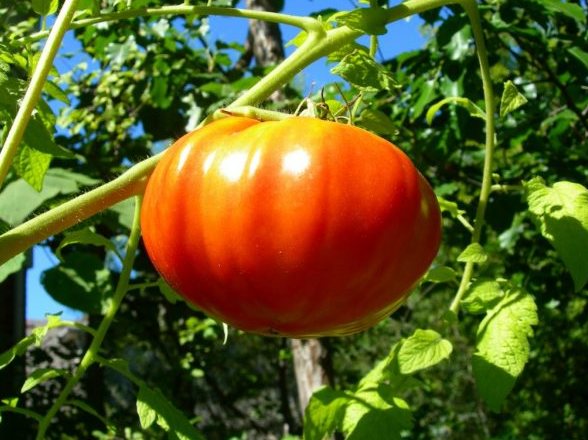

The bush is initially sprawling, needs to be formed (the best results are obtained when growing it in one or two stems) and in pinching, since it forms side shoots very actively.
The leaves of this variety have a classic appearance for a tomato - green plates, without wrinkles.
Flower brushes are densely formed (usually after 3-4 leaves). After the appearance of the sixth or seventh brush, the stem should be pinched.
The ovaries begin to appear after the ninth permanent leaf is formed. Their number should be normalized.
As for the timing of ripening, reviews of the King of Giants tomato mainly characterize it as medium and medium late, yielding a harvest in July – August. There is also information that the variety is early maturing, but this data has not been confirmed. The ripening period of tomatoes from the moment of full germination of the plant, according to various sources, varies from 110 to 150 days.
Description of fruits
The name "King of Giants" is intended to draw attention to the very large fruit size of this tomato. The advertising descriptions of the seed producers assure that the average weight of a ripe tomato of this variety is about 0.5 kg. The largest fruits, ripening in the lower part of the plant, allegedly "beat records" in weight: from 800 g to a whole kilogram.
In fact, reviews and photos provided by those who planted the King of Giants tomato indicate that these figures are overstated. Under proper planting and care conditions, tomatoes of this variety grow to medium to large sizes, but the average fruit weight is usually within 350 g.
Important! Based on the reviews, the fruits of a large weight, declared in the advertisement, the King of Giants tomato variety can give in the event that only 1-2 ovaries are left on each brush. Under ideally favorable agricultural conditions, it is theoretically possible to get giant tomatoes from a bush growing in protected ground, but there will be no more than 5-6 of them. Even with the most optimal outcome, the resulting crop is unlikely to justify the effort expended on it.
Fruits of the King of Giants variety have a flat-round shape with some ribbing in the area of the stalk (although in the photo printed on seed bags, images of a round and smooth tomato are often found).
The same ambiguity exists with regard to color. Basically, it is characterized as "kumachy" (bright red), but this name also refers to raspberry and even yellow tomatoes.
However, there is one thing in which the agrarians describing the King of Giants variety are almost unanimous - this is the excellent taste of the fruit. Their flesh is fleshy, dense and juicy. In ripe tomatoes, it is sweet with a pleasant, weakly expressed "sourness".
A warning! If the King of Giants tomato is overripe, its taste becomes "sugary".
Inside, the pulp is divided into 6-8 chambers. The skin of the tomato is smooth and firm, but not rough. As a rule, it does not crack (however, such an effect can be caused by prolonged waterlogging or extreme heat).
The characteristics and description of the King of Giants tomato variety will be incomplete without data on the yield and economic purpose of these tomatoes, information on the plant's resistance to pests and diseases, as well as a brief listing of its advantages and disadvantages.
The yield indicators of this variety are declared high. With proper care from 1 bush of the King of Giants tomato, you can get up to 8 kg of fruit. Considering that 1 sq.m. It is recommended to plant 2-3 plants on the plot, ideally it is possible to collect up to 24 kg of tomatoes from this area.
Important! Reviews of gardeners in general do not confirm the information about such large yields.
Keeping quality and transportability of the King of Giants tomatoes is considered average.
Vegetable growers agree that this tomato is excellent for fresh consumption. Such tomatoes make great salads, various sauces and juice. They are great for winter preparations like ketchup or lecho. At the same time, pickling or preserving the King of Giants tomatoes in pieces will not work - during the heating process, their pulp tends to "creep". For blanks as a whole, they are also not suitable, since they are too large.
It is believed that the King of Giants tomato is weakly prone to bacterial and fungal infections - in particular, it is immune to viral tobacco mosaic and various types of rot.
As for insect pests, whitefly can cause significant harm to tomatoes of this variety.
To combat it, it is advised to spray the bushes with "Confidor", diluting 1 ml of the drug in 10 liters of water.
| Benefits | disadvantages |
| Large-fruited | Advertising characteristics given by firms selling seeds are not always true |
| Good yields | Seedlings require painstaking care |
| Great Tomato Taste | It is imperative to tie the bushes |
| High resistance to common tomato diseases | Plants need frequent and regular feeding |
Tomato King of Giants is unlimited in growth, the bushes reach a height of 150-180 cm. In the open field it grows slightly lower - up to 160 cm. Standard bush, leaves are ordinary, not wrinkled. The first brush appears above the ninth leaf, and then every 3-4. Ripening is mid-maturing, closer to mid-early - 110-115, sometimes 120 days after germination.
The fruits of the King of Giants variety correspond to the name - one tomato can weigh up to 800 g, but their average weight is 300-600 g. They have a bright red color, flat-round shape, contain 7-8 chambers with seeds. The peduncle has no spot. Tomatoes are juicy, fleshy, taste sweet and sour, but weak sourness. The skin is firm and not prone to cracking.
King of Giants salad variety, also suitable for processing for juices and sauces. Due to their large size, the fruits can only be preserved chopped, as part of vegetable mixtures.
The variety contains few acids and many vitamins, therefore it is optimal for inclusion in the diet menu and baby food.
Disease and pest resistance
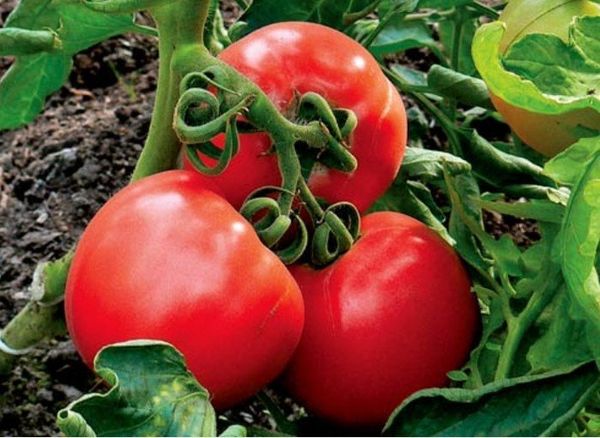

The varieties of Siberian breeding are distinguished by resistance to fungal diseases and resistance to extreme weather conditions.
Those who grew tomatoes in greenhouses cannot say that tomatoes are affected by diseases. However, the gardeners who grew the "king" in the garden are also very pleased with the results.
Advantages and disadvantages
Tomato "King of the Early" has several advantages:
- early fruiting and ripening;
- large-fruited;
- resistance to diseases and weather conditions.
Among the disadvantages of this variety:
- low productivity;
- the need for tying and fixing.
Facts
Designed for open planting in the Astrakhan, Kursk regions, Krasnodar Territory. The regions of the far north are not for this variety, but as a result of selection, the Siberian climate has become native to it.
Among the main features are:
- ripe fruits have a characteristic red color;
- average weight 150 - 200 grams;
- multi-chamber - their number reaches 7;
- has a rounded shape;
- seed content - up to 5%.
The largest fruits are harvested after 80 - 90 days after planting. Their weight reaches up to 500 grams. The rest of the crop is medium-sized fruits. From one bush, you can collect up to 4 - 5 kg of wonderful tomatoes. For 1 sq. m usually accounts for 3 - 4 bushes. Average yield per 1 sq. m - up to 12 kg.
Taking into account the description of the variety and its features, it is possible to design in advance the processing of fruits. A vegetable garden and a garden can be kept on the same site, but the plants will bear fruit at different times. Horticultural crops are cultivated separately as they mature. The first tomatoes are convenient for making fresh salads or juice. The rest of the crop is suitable for canning.
Features of growing varieties
The producer indicates that the variety is early. Given this indicator, sowing seeds can be carried out at the end of March.
Growing seedlings
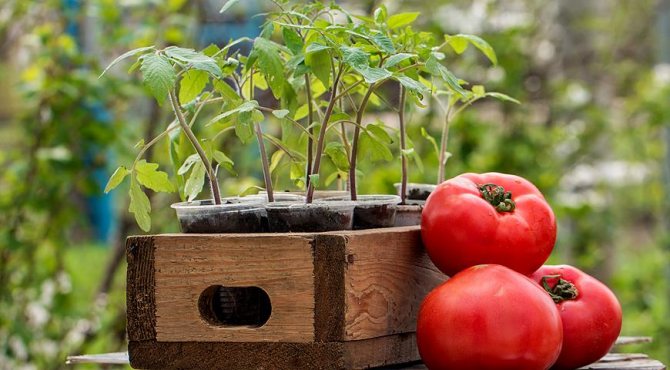

In order for the seeds to sprout together and quickly they need to be "revived". To do this, it is enough to put the seed in a damp cloth, then in a plastic bag and send it to a warm place for 2-3 days.
After a lapse of time, having opened the package, living seeds with signs of life will be immediately visible, and they should be sown.
Let's prepare the soil
The soil mixture can be purchased universal, for growing seedlings, or you can prepare it yourself. For this we use:
- fresh humus;
- herbal compost;
- garden land.
Humus can be from any farm animals, but matured, having lain for at least 1.5 years. The compost should be structured, homogeneous and sifted. Garden land is taken from the garden, but only from those places where nightshade plants have not grown in the last 2-3 years.
For each bucket of such a mixture, add two tablespoons of superphosphate and ammonium nitrate, mix well and keep for 2-3 weeks.
Sowing
Sowing is carried out in bowls by the group method. For this:
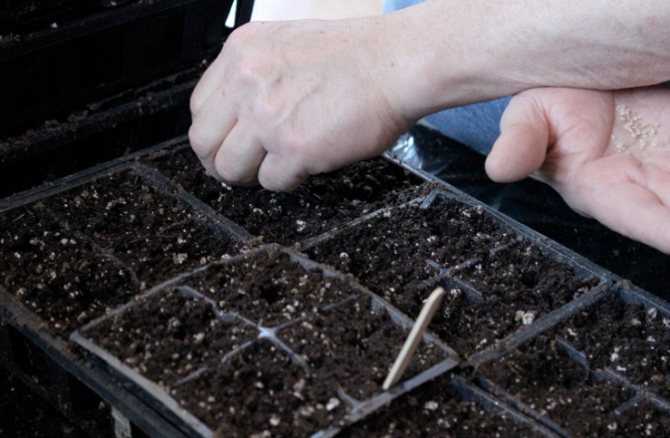

- We fill the plate with soil by 3-4 cm;
- We seal;
- We spread the seeds 2-3 cm apart from each other;
- We cover with earth 1-1.5 cm;
- Pour warm water through a strainer or spray from a spray bottle;
- Cover with glass or plastic wrap;
- We put it in a warm place for germination.
If the temperature is optimal (24-26 ᵒC), seedlings will appear in 4-5 days. At the first sign, the bowl is placed in the brightest place, and the temperature is lowered so as not to allow the seedling to stretch out.
Picking
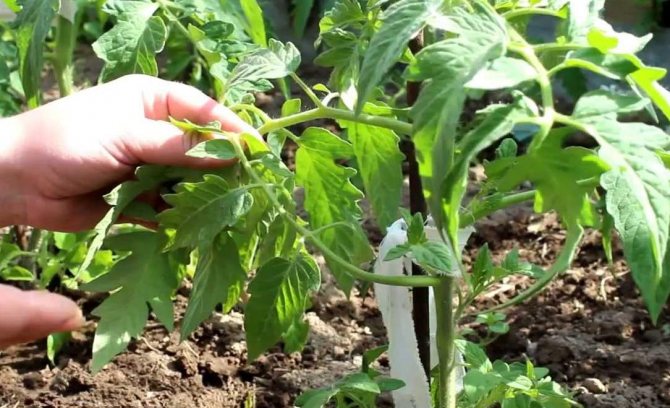

As soon as two true leaves are formed, a dive is carried out. In order to translate the pivotal root system of a tomato into a fibrous one, to make it more extensive for the absorption of nutrients, you need to tear off the root by 1/3.
Next, we plant the plant in an individual cup filled with a nutrient mixture to the very cotyledon leaves.
When planting, you need to ensure that the individual pot is initially only 2/3 filled with soil. When the shoot grows up, the earth will fill up, and the stem will be able to form an additional root system.
Transfer to the ground
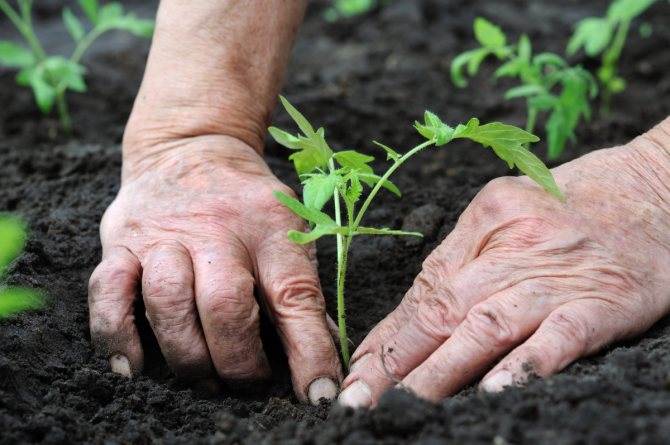

The optimal age for transplanting seedlings into the ground is 55-65 days. If the seedlings are in individual pots, then they tolerate transplanting well. You can transplant into the greenhouse at any time, but for planting in open ground you need to wait for such a period when return frosts are no longer possible.
Since the variety is early and will quickly begin flowering and fruiting, the peculiarity of its transplant is the preparation of the site. Any vegetables other than nightshades can be a predecessor for a culture, but a special requirement is imposed on the place of cultivation, it must be:
- sunny;
- sheltered from the winds;
- with light, nutritious soils.
When replanting, it is necessary to ensure the nutritional value of the soil. To do this, in the place where the seedlings will be planted, it is better to select a certain amount of soil, and pour a pre-prepared nutrient mixture there.
Seed preparation and germination
Growing varieties of tomatoes King of Kings, experts and breeders recommend to produce seedlings. The fact is that with such cultivation, it will be possible to get a better crop. And tomatoes will ripen much faster. Moreover, the bushes will have increased resistance to all kinds of fungal and infectious diseases.
- First you need to purchase quality seeds from the store. It is desirable that they have already been treated with a special agent that promotes rapid germination and protects against insect pests and fungi. Be sure to check the integrity of the seed bag.
- In the event that the seeds have not been treated with anything, they must be prepared before sowing in the ground. To do this, it is necessary to dilute a weak solution of potassium permanganate, which thoroughly rinse all the seeds. And then you need to soak them in any growth stimulator for about 24 hours.
- Particular attention should be paid to the quality of the soil in which you plan to sow seeds. The formation of healthy tomato bushes will largely depend on this. According to the reviews of gardeners who already have some experience in growing tomatoes of the King of Kings variety, the best option is a ready-made soil mixture bought in a store. It already contains all the trace elements necessary for tomatoes.
- In order for seedlings to appear simultaneously from all seeds, it is recommended to deepen the seeds to the same depth, trying to maintain an approximately equal distance between them. The optimum depth is 0.5 cm. It is not worthwhile to add them heavily, as otherwise they will emerge much longer.
- As soon as 2-3 real leaves appear, you can pick the seedlings. It is recommended to plant the plants in separate containers when it comes to growing in a greenhouse. As for open ground, tomatoes should be planted when there are no more night frosts. And at first, it is still better to hold the seedlings under the film so that they have time to get stronger.
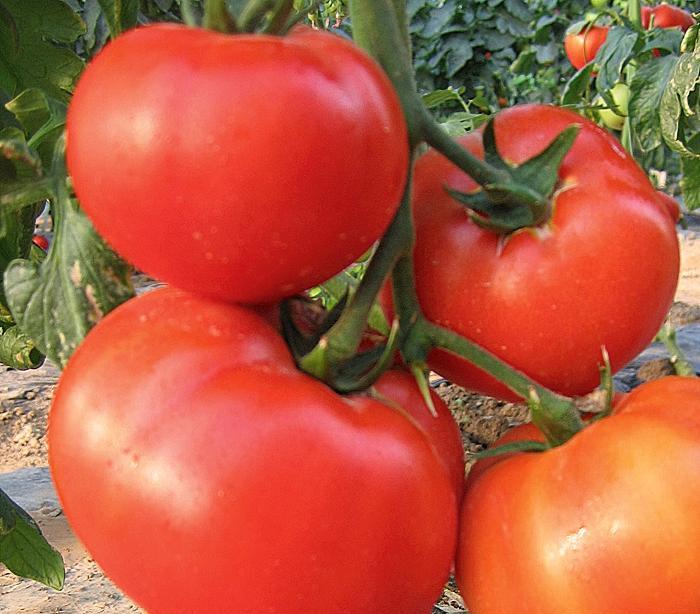

Care
To get early and abundant fruiting, timely is necessary:
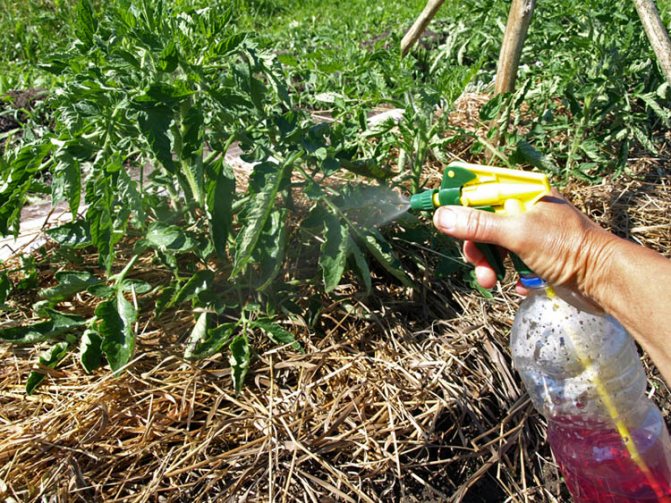

- watering;
- top dressing;
- mulching;
- formation;
- fungicide treatment;
- tying up shoots.
Watering
The root system of the plant can consume nutrients from the soil only in dissolved form. As soon as the soil under the bush dries up, growth stops and cell aging begins. To avoid such processes, timely and regular watering is necessary.
Harvesting and application of the crop
The collection of "royal" tomatoes begins in August. The first fruits are especially large, they are great for fresh consumption. They make salads, various snacks, hot and vegetable dishes. Ripe vegetables are processed into tomato products and used to prepare winter preparations: marinades and pickles. Yellow vegetables look especially beautiful in jars along with red ones.
It is not necessary to wait for the vegetables to fully ripen; they are able to pick up color on their own at room temperature. This quality is especially appreciated in regions with short summers.
Due to the increased content of glucose, which gives a sweet taste, vegetables are suitable for baby food. They are also recommended for allergy sufferers and for dietary nutrition.
Farmers reviews
Judging by the characteristics and reviews, the tomato is well known among gardeners, despite its short life span. However, many gardeners have already tried the variety on their plots. Here are their opinions on tomato:
Natalia, Chelyabinsk: “I planted the seedlings in May and picked tomatoes at the beginning of August. She did not pay special attention to tomatoes: she watered, pinned and tied up. On the first bunches, real giants grew, weighing up to 600 g, the latter are smaller. They went for salting. Together with the red ones they look very beautiful in a glass jar. "
Elizaveta, Krasnoyarsk: “For the first time I saw the King of Siberia in the photographs, the price suited me, and I decided to drop him off at my place. There is practically no care. During the growing season, the culture did not hurt, there were no pests. I collected 4 kg of vegetables from one plant. Delicious, sweet, no acid, with a pleasant aroma. I advise everyone to plant a variety on their site. "

